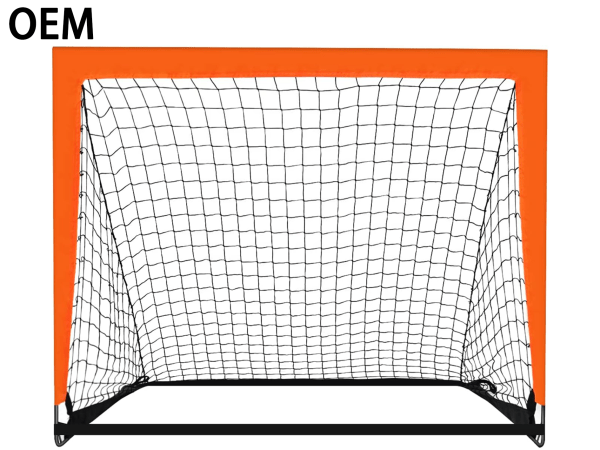When it comes to organizing a great football match—whether at school, in the backyard, or on a professional field—the importance of quality equipment cannot be overstated. Among the most overlooked but vital components is the football net. A sturdy, durable, and well-sized net enhances gameplay, ensures safety, and adds a professional touch to any football experience. In this comprehensive guide, we’ll explore everything from materials and sizing to setup and maintenance to help you find the best football net for your specific needs.
Why the Right Football Net Matters
At first glance, a football net might seem like a simple accessory. However, its function is crucial. It completes the goal structure, stops the ball securely, and contributes to the visual and emotional impact of scoring. A high-quality net absorbs the power of a fast shot, holds up in all weather conditions, and withstands repeated use.
From a performance standpoint, a proper net:
-
Prevents the ball from escaping after a goal.
-
Reduces disputes over whether a ball entered the goal.
-
Enhances training by maintaining efficiency during drills.
Whether you are managing a school sports program, coaching a youth team, or simply building your backyard pitch, the right net can dramatically improve both performance and safety.
Types of Football Nets Available
Choosing the correct net starts with knowing the types available in the market. Here’s an overview:
1. Standard Box Nets
Box nets are commonly used in professional and semi-professional fields. These nets are square-shaped and offer maximum visibility for goal-line cameras and spectators. They’re also known for their tautness and aesthetic appeal.
2. Stanchion Nets
These are supported by poles or stanchions and tend to curve backward, which adds a distinctive visual profile. They are often used in casual or training settings.
3. Continental Style Nets
These nets have depth at the top and bottom, giving them a fuller appearance. Their support system typically includes rear net support poles.
4. Back Support Nets
Also known as “basic” nets, these are often used in temporary setups. They’re simple, inexpensive, and perfect for recreational play.
Choosing the Right Material
Football nets are usually made of three main materials: polyethylene, polypropylene, and nylon. Here’s how to choose the right one:
-
Polyethylene: Excellent for weather resistance and UV protection. Common in outdoor setups.
-
Polypropylene: More affordable but less durable. Suitable for indoor or occasional outdoor use.
-
Nylon: Highly durable and elastic. Ideal for professional use but tends to be more expensive.
Mesh Size and Thickness
Mesh size matters when choosing a football net:
-
Smaller mesh (e.g., 2″ squares) traps the ball more effectively.
-
Larger mesh (4″ and above) may allow balls to squeeze through if not tightly woven.
As for thickness:
-
2mm: Suitable for recreational or youth play.
-
3mm–4mm: Great for school teams or regular training.
-
5mm and above: Designed for professional use.
Goal Dimensions and Compatibility
Before purchasing, it’s essential to know the size of your goalpost. Standard goal dimensions include:
-
Full-size goal: 24ft x 8ft (7.32m x 2.44m)
-
Youth goal: 21ft x 7ft or 18.5ft x 6.5ft
-
Mini goals: Vary between 12ft x 6ft and smaller
Ensure that the football net you purchase matches the height, width, and depth of your goal frame. Adjustable nets are a good option for those with varying setups.
Installation Tips
Installing a football net correctly ensures durability and safe gameplay. Here are some basic steps:
-
Lay the net flat and identify top/bottom edges.
-
Attach the top corners to the goalposts with ties or hooks.
-
Secure the sides and bottom, ensuring no slack that could interfere with gameplay.
-
Check tension across the net for consistent performance.
Some modern football nets come with clip-on fasteners, which reduce setup time and make replacements easier.
Maintenance and Longevity
Proper care can extend the life of your football net significantly. Here are some maintenance tips:
-
Clean regularly using mild soap and water to remove dirt and grime.
-
Avoid harsh chemicals that can weaken synthetic fibers.
-
Dry the net before storing to prevent mold or mildew.
-
Store indoors during the off-season or extreme weather.
UV-resistant nets are an excellent investment if your setup remains outdoors year-round.
Safety Considerations
A poorly maintained or poorly installed football net can become a safety hazard. Ensure:
-
The net is securely attached to avoid tripping.
-
No torn or frayed sections that could cause injury.
-
Regular inspections are carried out, especially for public or youth use.
Eco-Friendly and Sustainable Options
Increasingly, manufacturers are offering football nets made with recycled plastics or biodegradable materials. If environmental sustainability is a concern, look for nets labeled with certifications or eco-friendly symbols. These options not only reduce your carbon footprint but also show responsibility toward the environment.
Where to Buy High-Quality Football Nets
When sourcing a football net, choose a supplier known for quality and reliability. Your ideal net should:
-
Match your goal size.
-
Suit your play frequency (occasional vs. daily use).
-
Be compatible with the playing surface and location (indoor vs. outdoor).
Online platforms like MXYsport offer a wide range of football nets, each with detailed product descriptions, materials used, size charts, and maintenance guidelines to help you make an informed choice.
Final Thoughts
A football net is more than just a backdrop for goals—it’s an essential part of every match, contributing to accuracy, safety, and aesthetics. By choosing the right type, material, and size, and by taking care of its maintenance, you can ensure your football net serves you for years to come.
Whether you’re coaching a team, organizing tournaments, or playing with friends, investing in a top-quality net from a reliable source like MXYsport will make all the difference.







